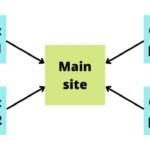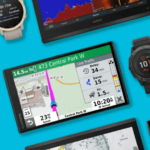More and more people are relying on environmentally friendly electricity from photovoltaic systems. Be it via a private system on the roof of a house or via shared solar cells in apartment buildings. We explain how you can use solar power most efficiently in the household.
Photovoltaics: Green electricity with seasonal fluctuations
Environmentally friendly electricity from solar cells is an important component for the power supply of the future. It is not for nothing that more and more Austrians are relying on self-generated solar power. Its share of total electricity consumption was “only” 2.16% in 2017, but according to forecasts it will increase sharply in the future. With the help of solar energy, around 900,000 tons of CO2 per year can already be saved throughout Austria.
Incidentally, the solar power is not only produced when the sun is shining, but also when the sky is cloudy. Photovoltaic systems achieve maximum performance in sunny weather in the spring and summer months. Up to 80% of the radiation is available on a cloudy summer day, and up to 25% on a winter day. You have to do without electricity from the sun completely during the night.
The goal: high self-consumption
For the economical operation of a PV system, the self-consumption of electricity should be as high as possible – that part of the converted solar energy that you can also use in your household without feeding it into the power grid.
The disadvantage: Often no one is at home during the day when the sun is shining and the available electricity is not used.
Storage of solar energy
The storage of solar power is already possible, but currently still expensive. Despite grants and subsidies, consumers have to dig relatively deep into their pockets for solar storage systems. But the good news is that electricity storage systems are constantly being developed and are cheaper year after year.
We will show you how you can use your solar power as effectively as possible today with the following tips:
Tips for the efficient use of your PV power
Smart home & solar energy: the perfect combination
Those who use devices in phases of sunshine benefit most from their own green electricity. This works particularly easily in a smart household. If the household appliances are equipped with a WLAN function, they can be flexibly controlled via the app, even when nobody is at home.
As soon as the sun shines, you can start the washing machine, dryer or dishwasher on the go. Some solar systems are now even equipped with their own monitoring system, which uses an app to show when the most electricity is being produced. To do this, the data from the PV system is combined with current weather data from the Internet and the perfect start time for your household appliances is determined.
Household appliances with timer
Those who do not yet have a networked and smart household can make use of the timer, which is already integrated in many electrical appliances. For example, you can load the washing machine and dishwasher in the morning and move the start time to sunny lunchtime. Modern ovens can also be used with a time delay. So you can cook the roast in the afternoon with clean solar power and look forward to a finished dish in the evening.
Switch on the washing machine and dishwasher with a time delay
Have you set up your household appliances in such a way that they wash or dry them at sunny lunchtime? Ideally, you should let the washing machine and dishwasher or tumble dryer work with a little delay. When operating at the same time, the solar power generated may not be sufficient for both devices. It is best to start the washing machine and the dishwasher every two hours to ensure that both use the solar power perfectly.
Charge batteries during the day
Some household appliances and technology gadgets have a battery and need to be charged regularly. Usually you plug the devices into the socket overnight. Cordless vacuum cleaners, tablets, etc. can also be charged during the day. In this way, you can use your self-generated solar power for later use of the respective devices.
Author
Selena is a blogger and a guest contributor for a well-known brand that includes MESHEBLE & INTHEMARKET. In her leisure time, she plays tennis.


